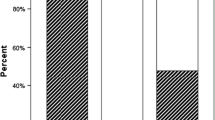Abstract
It is difficult to treat an infected implant of the hip joints, as it requires long-term treatment and eventually may lead to amputation or arthrodesis, involving immeasurable physical and psychological suffering for the patient. We utilized antibiotic-impregnated cement spacers for 17 infections after total hip arthroplasty and bipolar arthroplasty with good clinical results. We thoroughly removed any foreign material and formed an antibiotic-impregnated cement spacer into a shape similar to that of the implants. This enabled high-concentration antibiotics to act on the infected sites. It also can prevent leg-length discrepancy and atrophy of bones or muscles. Although cement spacers have been reported to have problems regarding shape and strength, we achieved good results with cement spacer molds in the present study. All revision surgeries were performed using a two-stage procedure. No infection has recurred at a mean follow-up of 3 years 2 months.
Similar content being viewed by others
Author information
Authors and Affiliations
About this article
Cite this article
Yamamoto, K., Miyagawa, N., Masaoka, T. et al. Clinical effectiveness of antibiotic-impregnated cement spacers for the treatment of infected implants of the hip joint. J Orthop Sci 8, 823–828 (2003). https://doi.org/10.1007/s00776-003-0722-y
Received:
Accepted:
Issue Date:
DOI: https://doi.org/10.1007/s00776-003-0722-y




